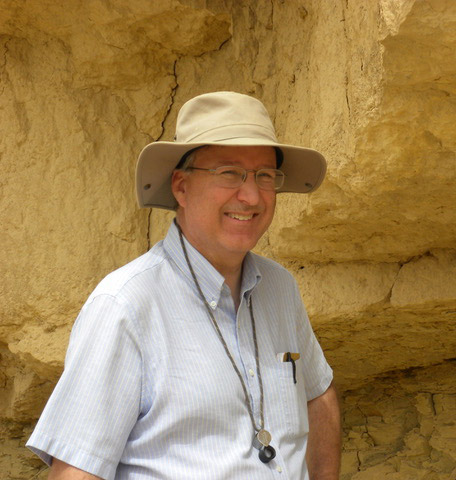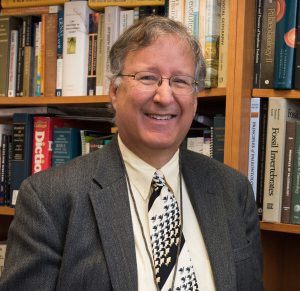
Wilson publication uses complex fossil database to explore evolutionary events

Mark Wilson, the Lewis M. and Marian Senter Nixon Professor of Natural Sciences and Geology at The College of Wooster, is co-author of a recent article in Science Advances: “Quantifying ecospace utilization and ecosystem engineering during the early Phanerozoic—The role of bioturbation and bioerosion.” As part of an international team of scientists, Wilson, an expert in bioerosion or the erosion of rocks and shells by organisms, focused on sorting the bioerosion data and patterns to add to the development of “a complex database of hundreds of fossil occurrences, much from our own research,” said Wilson. “It is satisfying to see so many small-scale studies accumulate into large-scale evolutionary patterns. We now also have an extensive database and a tested set of methods for future projects examining biological patterns before and after other significant events in the history of life.”
 Wilson’s 40 years of experience studying the trace fossils that clams, barnacles, and other organisms leave behind as they bore through and grind away at sedimentary rock, make him uniquely qualified to “take that evidence and piece together larger patterns,” he explained. “Some of the studies we looked at date back to the 19th century.” In paleontology, as fossils are found over time, the names change from the original paleontologist who discovered the fossil. “This is a study putting together hundreds of smaller studies into a larger database. The advantage of this team is that we’ve done many of those other studies. We know the language and use that knowledge of past work to reinterpret the fossils and put them into greater context.”
Wilson’s 40 years of experience studying the trace fossils that clams, barnacles, and other organisms leave behind as they bore through and grind away at sedimentary rock, make him uniquely qualified to “take that evidence and piece together larger patterns,” he explained. “Some of the studies we looked at date back to the 19th century.” In paleontology, as fossils are found over time, the names change from the original paleontologist who discovered the fossil. “This is a study putting together hundreds of smaller studies into a larger database. The advantage of this team is that we’ve done many of those other studies. We know the language and use that knowledge of past work to reinterpret the fossils and put them into greater context.”
The research in the article is the culmination of over 20 years of work examining hundreds of rock formations in locations across every continent. Studying these fossils in the context of two intervals of significant evolution and diversification of organisms—the Cambrian Explosion and the Great Ordovician Biodiversification event—Wilson and his team are able to greater understand the actions and effects of those organisms during that time. “It’s an unusual kind of fossil because we’re looking not at the organism itself but what the organism did. Trace fossils are records of behavior,” said Wilson. “We’ve added these behavioral records to the body fossil records to build a database that tracks how those activities changed over time and space.”
Through studying these activities, “Our hypothesis is that these soft bodied, trace-making animals were there in abundance before the Cambrian explosion, and before the Great Ordovician Biodiversification event. They were, in part, preparing the environment,” Wilson explained. “They helped ‘engineer’ these bursts of diversity by churning the sediment, recycling nutrients, and oxidizing the seafloor. This may have been a precursor, essentially a foundation for these other large evolutionary events.” The trace fossil-producing organisms’ engineering efforts may have laid the foundation for greater diversity in marine life, for example. Further, the organisms need for oxygen “tells us that oxygen was present in particular sections of ancient oceans, and that seems to be key to critical evolutionary diversifications,” Wilson said.
With the development of this current database, Wilson sees many opportunities for additional research. “I look forward to future applications of the data and methodology we employed in this work,” he noted in his blog about the publication. “Wooster I.S. students can use this database to test additional evolutionary hypotheses, and to start new databases following these methods,” he said. “There is plenty of delightful work to do in this project, from field paleontology to big data statistics.”
Posted in News on September 9, 2020.
Related Posts
Related Areas of Study
Geology
Start research in your first year and graduate with a strong foundation in the Earth Sciences.
Major Minor

